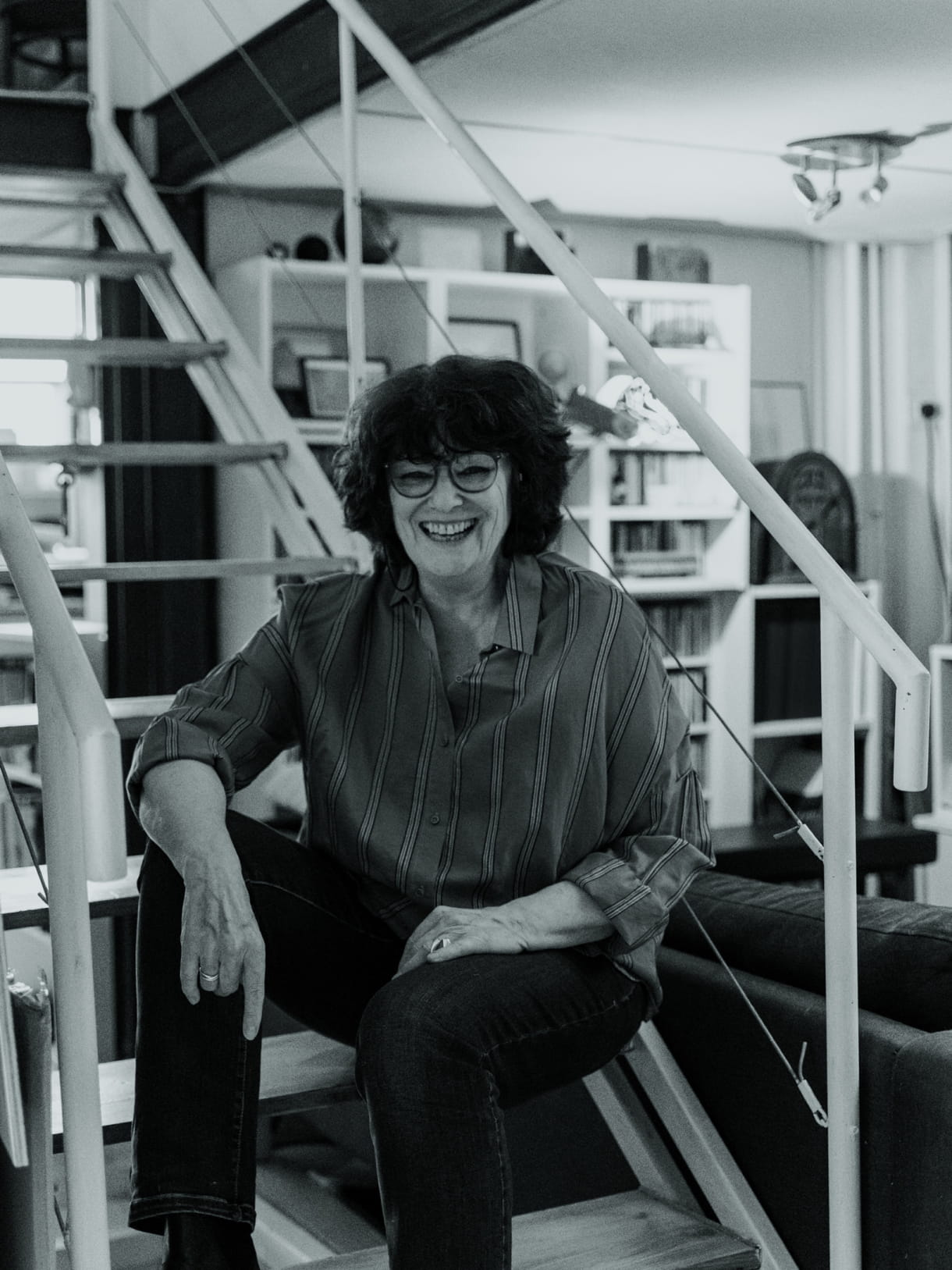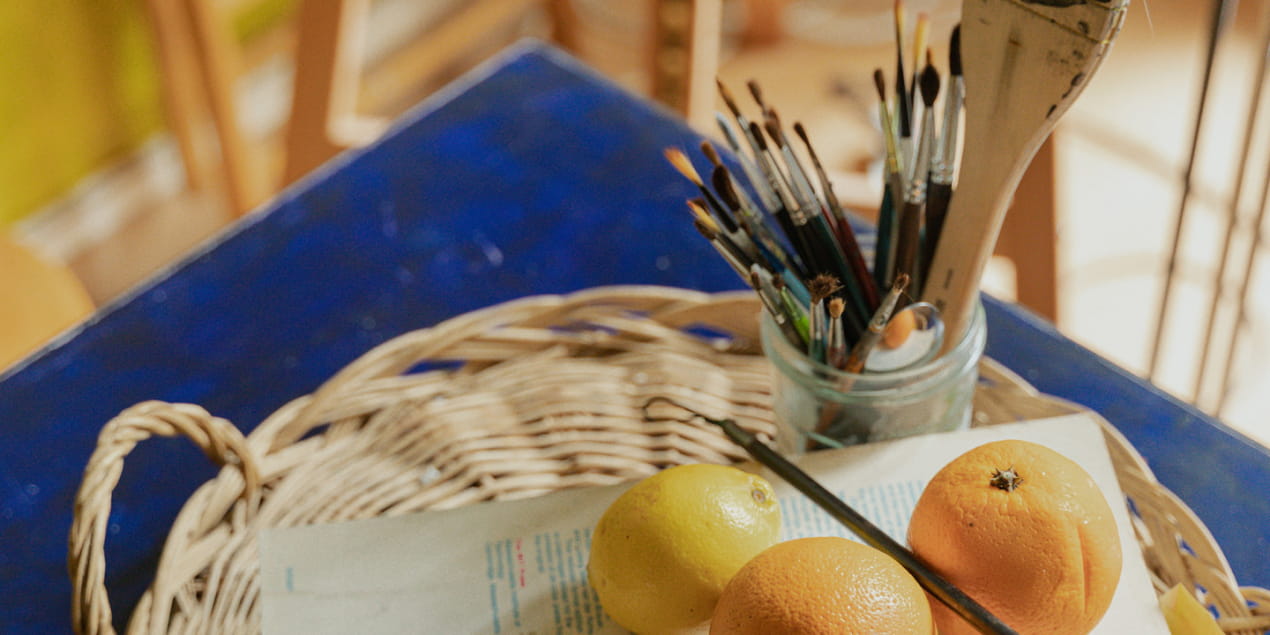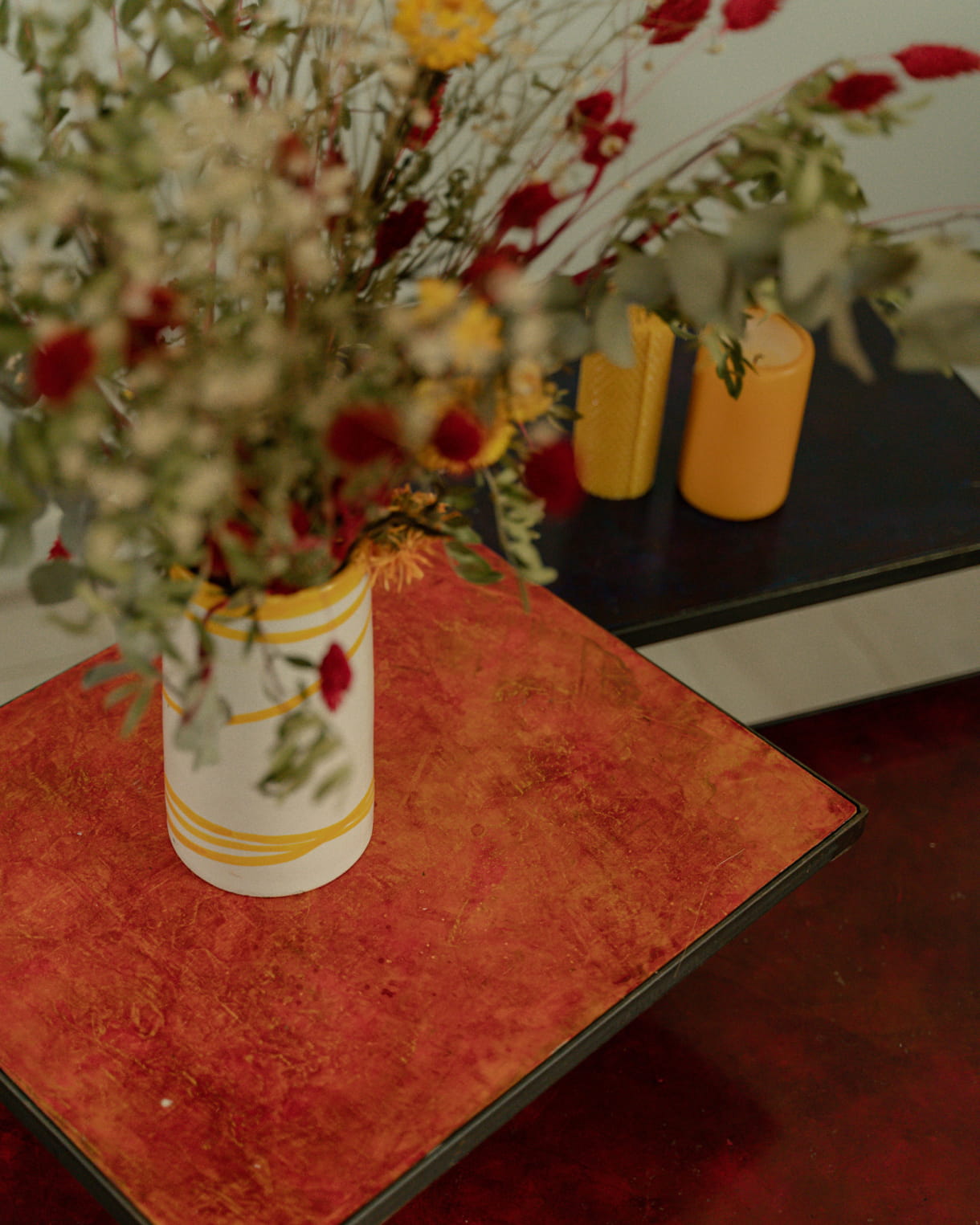It appears that your cart is currently empty!
We met a family and artistic duo:
Françoise, a committed artist for over 30 years and Lohana, her daughter, in charge of communication and sponsorship, discover the history of this singular and touching collaboration.

How did you get your start? What was the catalyst? Did you always want to be an artist?
The catalyst took action a long time ago when I was still studying architecture. I was already interested in social issues, ecology and an egalitarian society. I was lucky to have experienced 1968 as a teen and, as a young adult, this had an overwhelming effect on an entire generation. We were fighting for women’s rights, the right for birth control and abortions, rights for the underprivileged and the right to love others, as these were all fundamental values for us. We were happy innocents. We thought that it was possible. We opened a lot of doors so that you young women could be in a world that was easier and more open.
The catalyst that led me to art was not a catalyst. Ever since I was a child, as far back as I can remember, I drew all the time and I loved this. I built my forts and created worlds for my toys. I invited my friends inside to expand the game and socialise together. It was amazing to play in a group. I think that what I do now with “others” comes from this childhood that was so rich in human relationships from an early age.
Then, I wanted to be an artist, but my parents gently guided me towards architecture. I don’t regret this at all, because being an artist based in architecture is a great way to structure thought. Le déclic de l'art n'est pas un déclic, cela a toujours été, depuis aussi petite que je puisse y penser, je dessinais tout le temps et j'adorais cela. Et je construisais des cabanes, des univers pour les jouets, et j'y invitais mes amies pour agrandir le jeu et socialiser ensemble, jouer à plusieurs était extraordinaire. Sans doute ce que je fais maintenant avec " les autres" vient de cette enfance riche en relations humaines très tôt dans la vie.
Puis j'ai voulu être artiste, mais mes parents m'ont gentiment orientée vers l'architecture ce que je ne regrette nullement car être artiste à partir d'une base d'architecture structure formidablement bien la pensée.
What is your background?
First, I created sculptures and drawings based on concepts concerning urban issues, cities, networks, movements in the city, technology and ethics. In 1980, it seemed to me that there were links and bridges to build between the beginning of digitalisation and the transformations of the physical world. One affected the other. Computers influenced different forms of design: urban, landscapes, social and ethical. Today, these connections have become a reality and we have to understand the problems and benefits that this has established. I would say that this technical dimension facilitated virtual human relations, but it also gave the – false – impression of social improvements, which isn’t always the case. Around the year 2000, I thought that I should develop one of my initial interests, rooted in the social field, and bring “others” into my work of artistic reflections, just as I did with my friends and our toys that we all shared. This is what I started to do when I adopted Lohana and, I would say, during the adoption and afterwards: I wanted to create works about key societal issues – anchored in human rights – and invite the underprivileged populations of Brazil, Rio de Janeiro, the favelas of Rio, to create these works with me, which we then installed in their neighbourhoods.


Your best memory from your life as an artist?
My best memory from my life as an artist is right here beside me! Of course, it’s the adoption of Lohana, but not just her adoption. More precisely, it’s how this adoption became a work of art or, more exactly, how, starting with the discovery and then the understanding of this extremely unjust Brazilian society, I transformed my work and redirected it towards an artistic and humanitarian work. The other miracle is that, all throughout her education, Lohana herself wanted to be a part of my participatory creations. She worked with me as soon as she was adopted at age 7! She taught me how to see the big and small differences in Brazilian society and how to respect them. It’s often too easy to judge. First, you have to understand how things got that way. So, my best memory as an artist is this life lesson that I received when I adopted Lohana.

Do you have a habit or quirk when you are working?
All artists have their habits, because creation implies that we have invented creative procedures, personal methodologies on which we build upon to invent things. I enjoy reading history books and precise information when I start a project. I draw from these texts. I do a lot of research before getting to work. I also like to listen to certain music, generally classical or contemporary, artists such as Steve Reich, Pascal Dusapin, Michaël Levinas, Berio, Terry Riley… Contemporary music and especially serial music are huge inspirations. And when I work, I love to switch from one to another. I think that this switching habit has transformed my brain!
What work of art are you most proud of?
The Parque metro station in Lisbon. It’s my cathedral. I loved creating this artwork formed from 450,000 ceramic tiles entirely made by hand. It is my biggest and most important project, because it allowed me to take the time to study the entire history of a country and its culture – even its language – and transform this knowledge into an immense work of art in 50 chapters that recounts a saga around the world, the discovery of many lands and a maritime adventure that forged a people and their future. When I worked on this project, I lived in Lisbon for three years and, of course, the fact that I lived in Portugal, immersed in its culture, pushed me to go to Brazil to adopt a child there. Everything in life is connected: creation, family, languages, others, elsewhere.

Lohana, can you introduce yourself as well?
L :I was born in 1992 in Rio, a city with huge geographic and social contrasts. At a very young age, I became aware of the inequality and injustice in my daily life. When I was 7, something amazing happened. I seized an opportunity that changed my life and allowed me to meet a woman, Françoise, whom I called my “luck mother” at the time. I grew up and studied in France. And I spent my holidays in the favelas of Brazil. My origins are my strength, because they give me a dual vision and comprehension of the cultural environment that I work in. I’ve always loved to bring people together, organise activities and work projects, create synergies between people and build formations. This is why I’ve always been interested in cross-range projects that enhance artists and their creations. I work with associations, up-and-coming artists and start-ups for the coordination and production of responsible artistic projects that are committed to a cause.
How do you view Françoise’s work? How would you describe it in a few words?
Politically engaged artwork and projects that nurture tolerance, dialogue and togetherness. A woman, an artist, the director of an association with international reach, a professor, an architect… She’s a jack-of-all-trades in a sphere that’s not always easy to navigate. I admire her a lot and I’m very close to her work. Our lives and projects constantly intertwine.
Your habit or quirk when you work?
I need my litre of coffee before starting my day. Coffee with sugar, sometimes too much sugar, a habit that stayed with me from Brazil. It’s a very sacred moment for me! For each project, I always try to know about the project and its context. I like to be sure about what I am doing and I’m very meticulous in that I like when a job is well done and finalised. I love to listen to classical and repetitive music when I work, a habit I certainly picked up from my mother.
Your favourite work of art by Françoise?
Her very first metro station, the Concorde station in Paris, completed in 1991. It’s entirely covered in the text of the Declaration of the Rights of Man and of the Citizen, from 1789. The punctuation and spaces were removed between the words. At first glance, the viewer doesn’t recognise any text, but, little by little, words and phrases start to take form. I find this project incredibly powerful in its simplicity and still extremely modern. While the metro is an urban space and a place of transit, the Concorde station opens a window onto culture and art to all those who get lost between these letters as they wait for the next metro to arrive.

What are the objects that you each prefer in the workshop?
F & L :
The workshop is on the ground floor and opens onto a private courtyard filled with bamboo and climbing plants. The birds sing there all day long. It’s very calm and soothing. You can find a lot of little objects, sculptures, art and souvenirs from travelling. Right now, we really like the sculpture “Les montagnes, l’invention de dieu” currently underway for the Lisbon metro. We also love the Flos 265 lamp hanging above the worktable. And, of course, the hand-painted coffee table with four pivoting trays with four legs, which Françoise built for her mother in our family home in Groenendaal and which Lohana inherited from her grandmother.
You are working on new projects right now. Can you tell us a little more about them? What form does your collaboration take?
F & L :
We’re working on several projects simultaneously. For several months, we’ve been working on an order of 32 sculptures for the Lisbon metro with Thomas, who is also an architect and Lohana’s boyfriend. We are developing an exhibition on the work carried out by the Inscrire association for a museum in Rio de Janeiro. We pitched a project for Brussels and Chengdu in China. Françoise continues to give lessons to her students at ESAM via Zoom. Lohana has been working for a while now on giving a visual and structural makeover to the website of the Inscrire association. Other projects are on hold due to the lockdown.
We work and talk together every day about things that must be done digitally, mechanically or by hand. We always work closely together. It’s a real pleasure!
Pour découvrir l'ensemble des oeuvres et projets de Françoise
c'est ICI
Crédit photos : Jeanne Perrotte








